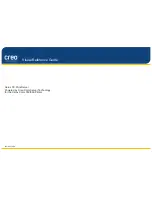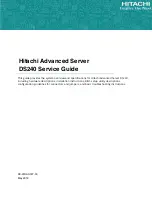
DeviceMaster LT User Guide
: 2000586
Rev. B
Troubleshooting and Technical Support - 111
Troubleshooting and Technical Support
This section contains troubleshooting information for your DeviceMaster LT. You
may want to review the following subsections before calling Technical Support
because they will request that you perform many of the procedures or verifications
before they will be able to help you diagnose a problem.
•
•
•
Testing Ports Using Port Monitor (PMon2)
•
Testing Ports Using Test Terminal
•
Socket Mode Serial Port Testing
•
•
Removing DeviceMaster LT Security Features
•
Returning the DeviceMaster LT to Factory Defaults
If you cannot diagnose the problem, you can contact
Troubleshooting Checklist
The following checklist may help you diagnose your problem:
•
Verify that you are using the correct types of cables on the correct connectors
and that all cables are connected securely.
Note:
Most customer problems reported to Comtrol Technical Support are
eventually traced to cabling or network problems.
•
Verify that the network IP address, subnet mask, and gateway is correct and
appropriate for the network. Make sure that the IP address programmed into
the DeviceMaster LT matches the unique reserved IP configured address
assigned by the system administrator.
-
If IP addressing is being used, the system should be able to ping the
DeviceMaster LT.
-
If using DHCP, the host system needs to provide the subnet mask and
gateway.
•
Verify that the Ethernet hub and any other network devices between the
system and the DeviceMaster LT are powered up and operating.
•
Verify that the hardware MAC address in the NS-Link device driver matches
the address on the DeviceMaster LT.
•
If using a driver for Windows, verify that you are addressing the port correctly.
In many applications, device names above COM9 require the prefix
\\.\
in
order to be recognized. For example, to reference COM20, use
\\.\COM20
as the
file or port name.
















































